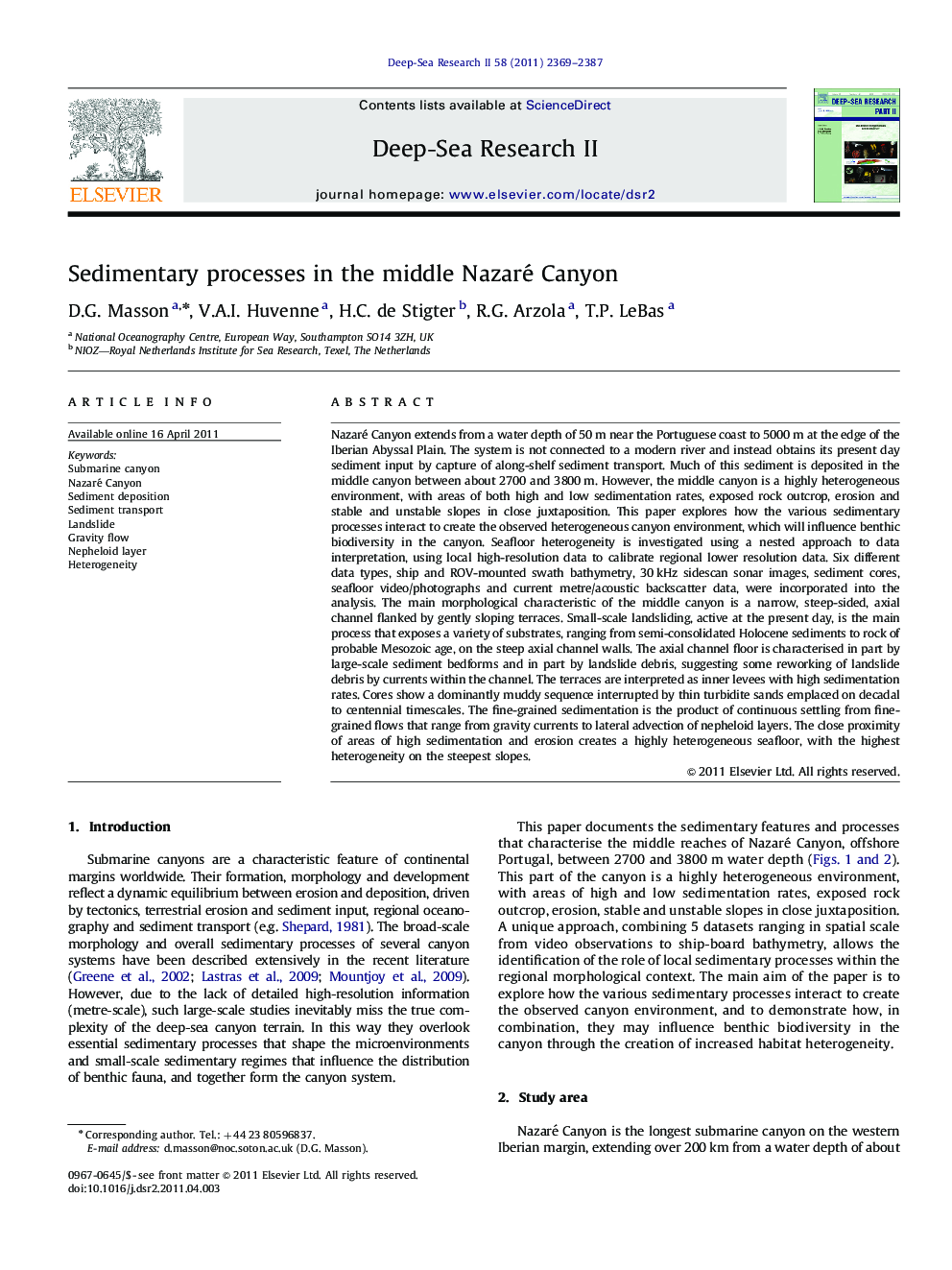| کد مقاله | کد نشریه | سال انتشار | مقاله انگلیسی | نسخه تمام متن |
|---|---|---|---|---|
| 4536927 | 1626460 | 2011 | 19 صفحه PDF | دانلود رایگان |

Nazaré Canyon extends from a water depth of 50 m near the Portuguese coast to 5000 m at the edge of the Iberian Abyssal Plain. The system is not connected to a modern river and instead obtains its present day sediment input by capture of along-shelf sediment transport. Much of this sediment is deposited in the middle canyon between about 2700 and 3800 m. However, the middle canyon is a highly heterogeneous environment, with areas of both high and low sedimentation rates, exposed rock outcrop, erosion and stable and unstable slopes in close juxtaposition. This paper explores how the various sedimentary processes interact to create the observed heterogeneous canyon environment, which will influence benthic biodiversity in the canyon. Seafloor heterogeneity is investigated using a nested approach to data interpretation, using local high-resolution data to calibrate regional lower resolution data. Six different data types, ship and ROV-mounted swath bathymetry, 30 kHz sidescan sonar images, sediment cores, seafloor video/photographs and current metre/acoustic backscatter data, were incorporated into the analysis. The main morphological characteristic of the middle canyon is a narrow, steep-sided, axial channel flanked by gently sloping terraces. Small-scale landsliding, active at the present day, is the main process that exposes a variety of substrates, ranging from semi-consolidated Holocene sediments to rock of probable Mesozoic age, on the steep axial channel walls. The axial channel floor is characterised in part by large-scale sediment bedforms and in part by landslide debris, suggesting some reworking of landslide debris by currents within the channel. The terraces are interpreted as inner levees with high sedimentation rates. Cores show a dominantly muddy sequence interrupted by thin turbidite sands emplaced on decadal to centennial timescales. The fine-grained sedimentation is the product of continuous settling from fine-grained flows that range from gravity currents to lateral advection of nepheloid layers. The close proximity of areas of high sedimentation and erosion creates a highly heterogeneous seafloor, with the highest heterogeneity on the steepest slopes.
Journal: Deep Sea Research Part II: Topical Studies in Oceanography - Volume 58, Issues 23–24, 1 December 2011, Pages 2369–2387